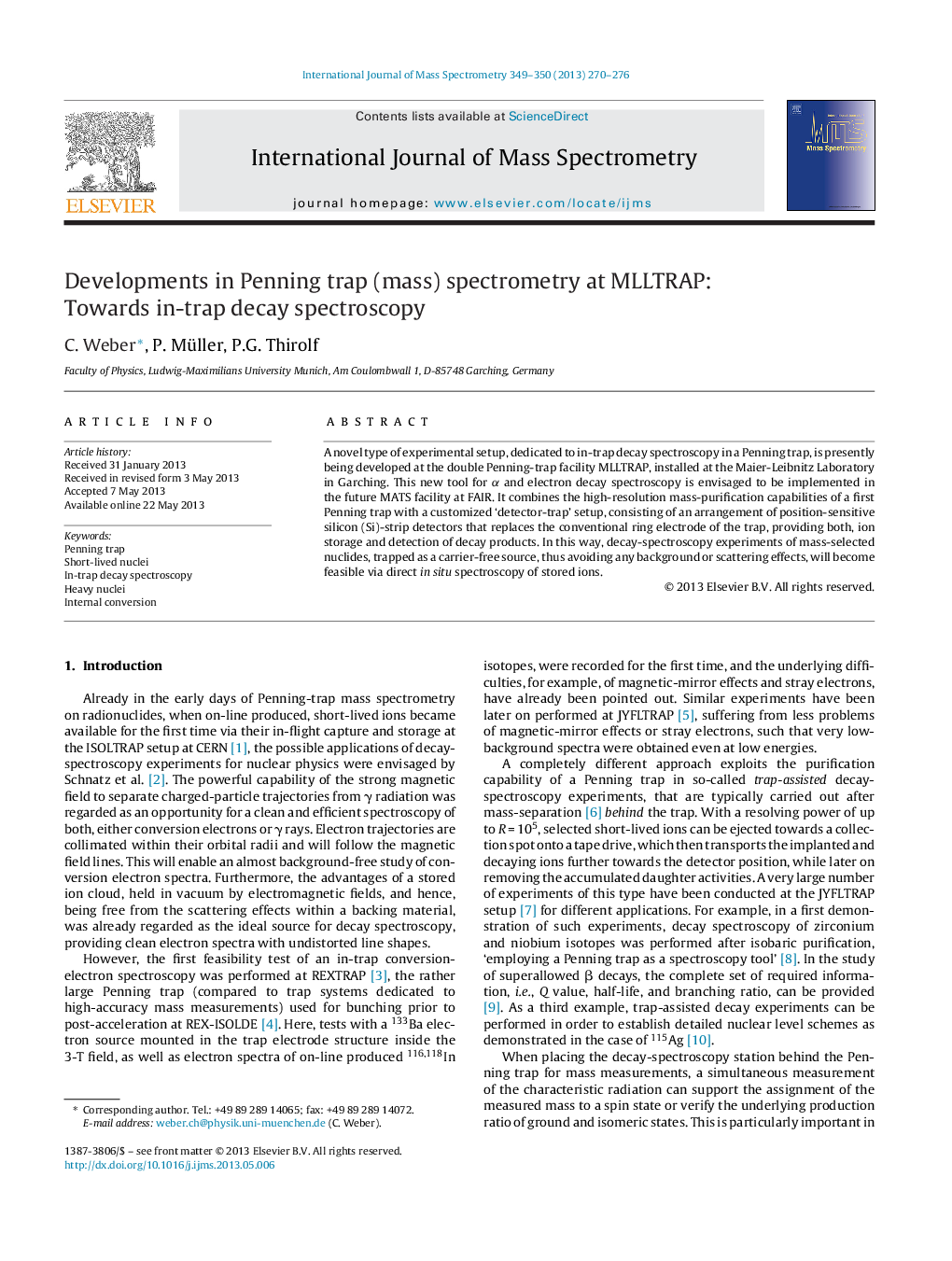| Article ID | Journal | Published Year | Pages | File Type |
|---|---|---|---|---|
| 1192189 | International Journal of Mass Spectrometry | 2013 | 7 Pages |
•A “detector trap” inside a Penning trap magnet is developed for the future MATS facility.•A direct, in situ observation of nuclear decays of mass-separated isotopes becomes feasible.•A novel type of recoil-distance experiment is envisaged.
A novel type of experimental setup, dedicated to in-trap decay spectroscopy in a Penning trap, is presently being developed at the double Penning-trap facility MLLTRAP, installed at the Maier-Leibnitz Laboratory in Garching. This new tool for α and electron decay spectroscopy is envisaged to be implemented in the future MATS facility at FAIR. It combines the high-resolution mass-purification capabilities of a first Penning trap with a customized ‘detector-trap’ setup, consisting of an arrangement of position-sensitive silicon (Si)-strip detectors that replaces the conventional ring electrode of the trap, providing both, ion storage and detection of decay products. In this way, decay-spectroscopy experiments of mass-selected nuclides, trapped as a carrier-free source, thus avoiding any background or scattering effects, will become feasible via direct in situ spectroscopy of stored ions.
Graphical abstractFigure optionsDownload full-size imageDownload high-quality image (144 K)Download as PowerPoint slide
